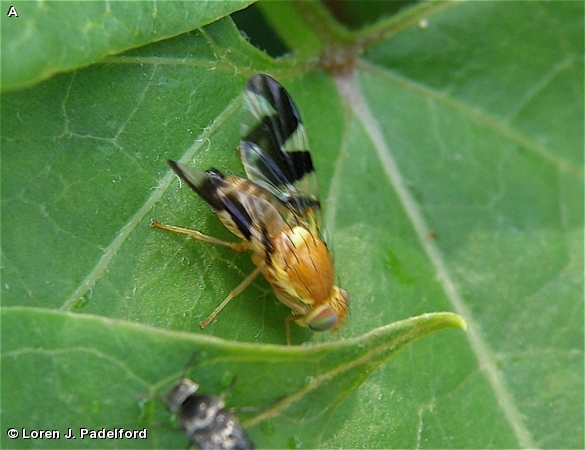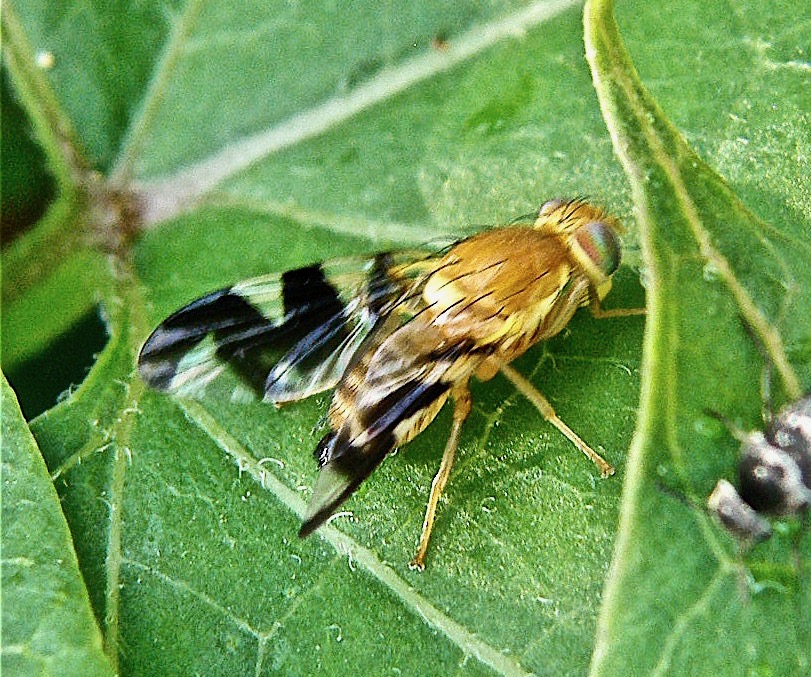
This fly is about 3/8 inch (10 mm) long. It has large, iridescent, greenish eyes, a tawny brown body color and banded wings. It has a yellow spot on its back. Its conspicuous wing markings make it easy to identify. The female is larger than the male and its abdomen is more pointed.
This fly is probably common in Fontenelle Forest and Neale Woods, especially wherever walnut trees are present. They are also known to attack peaches.
The husk fly produces one generation a year and overwinters as a pupa in the soil beneath the trees. Adults usually emerge from July to early September but sometimes as late as October. They mate about 8 days after emerging. Egg laying begins anywhere from 2 to 6 weeks after the first emergence and continues until fall. Eggs are laid in groups of about 15 in a small cache beneath the fruit skin. Peaches are attacked when they are almost mature. Eggs hatch within 5 days. The white maggots feed inside the fruit for 3 to 5 weeks, depending on the temperature. Mature larvae leave the fruit through a small exit hole or the hole through which the eggs were deposited, usually at the opposite end of the fruit from the stem. They drop to the ground and burrow into the soil to pupate. They remain in their pupal case for at least a year. Some remain in diapause for 2 years and a few even 3 or 4 years.
Disclaimer: The content of NatureSearch is provided by dedicated volunteer Naturalists of Fontenelle Forest who strive to provide the most accurate information available. Contributors of the images retain their copyrights. The point of contact for this page is: Loren Padelford.



